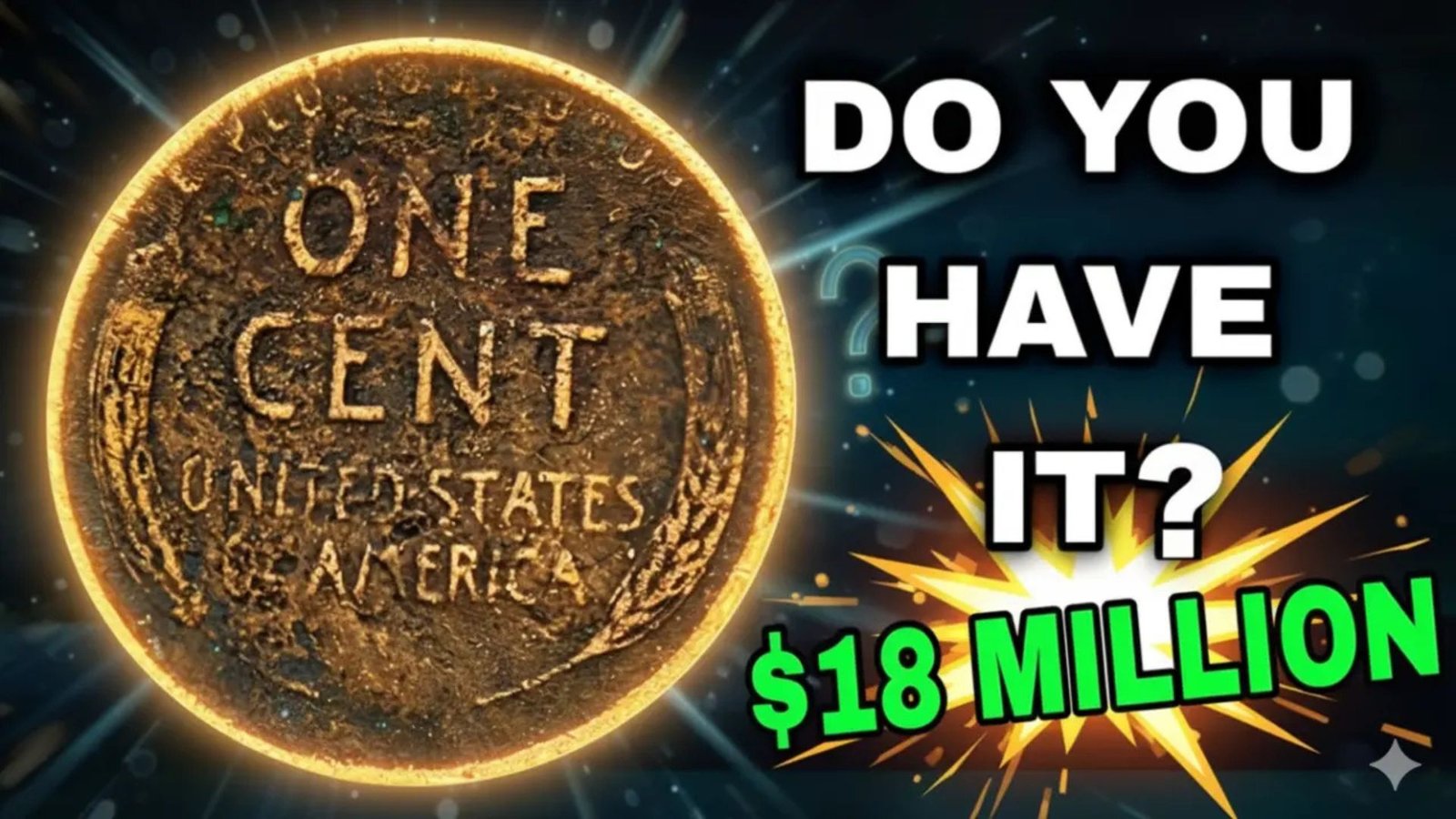Are you curious about the worth of wheat pennies? These small copper coins, minted from 1909 to 1958, have captured the hearts of collectors and investors alike. Over the past 10 years, their value has seen exciting changes, making them a fascinating topic for coin enthusiasts. In this comprehensive guide, we’ll explore the wheat pennies value from 2015 to 2025, why they’re so special, and how you can start collecting or selling them. Let’s dive into the world of wheat pennies and uncover their hidden treasures!
What Are Wheat Pennies?
Wheat pennies, officially called Lincoln Wheat Cents, are U.S. one-cent coins produced by the United States Mint between 1909 and 1958. They’re named for the two wheat stalks on the reverse side, designed by Victor David Brenner. These coins feature Abraham Lincoln’s portrait on the front, making them iconic in American history.
Their appeal lies in their age, rarity, and historical significance. Whether you’re a seasoned collector or a beginner, understanding the wheat pennies value can help you make smart decisions when buying, selling, or holding onto these coins.
Why Are Wheat Pennies So Popular?
- Historical Value: They connect collectors to early 20th-century America.
- Rarity: Some years and mint marks are harder to find, increasing their worth.
- Affordability: Many wheat pennies are budget-friendly for new collectors.
- Nostalgia: Their classic design evokes memories of a bygone era.
The Value of Wheat Pennies Over the Past 10 Years (2015–2025)
The value of wheat pennies has fluctuated over the last decade due to factors like market demand, coin condition, and rarity. Below, we’ll break down how their worth has evolved and what drives their prices.
Factors Affecting Wheat Pennies Value
Several elements determine how much a wheat penny is worth:
- Condition (Grade): Coins in better condition (graded by services like PCGS or NGC) fetch higher prices. Grades range from Poor (P-1) to Mint State (MS-70).
- Rarity: Some years, like 1909-S or 1931-S, were minted in smaller quantities, making them more valuable.
- Mint Mark: Pennies from San Francisco (S) or Denver (D) can be worth more than those from Philadelphia (no mint mark).
- Market Trends: Collector demand and economic conditions influence prices.
- Errors: Minting mistakes, like double dies or off-center strikes, can skyrocket a coin’s value.
Wheat Pennies Value Trends (2015–2025)
Over the past decade, wheat pennies have seen steady interest from collectors, with certain coins experiencing significant price jumps. Here’s a look at the trends:
2015–2018: Steady Growth
- Common wheat pennies in circulated condition (e.g., 1940s and 1950s) were valued at $0.10 to $1.
- Key dates like the 1909-S VDB and 1914-D saw prices ranging from $500 to $2,000 in mid-grade conditions.
- High-grade coins (MS-65 or better) commanded premiums, with some rare dates reaching $5,000+ at auctions.
2019–2022: Surge in Collector Interest
- The coin collecting hobby grew during the pandemic, boosting demand for wheat pennies.
- Common dates in average condition rose to $0.25–$2.
- Rare coins like the 1922 No D (a famous error coin) soared, with mid-grade examples selling for $1,000–$5,000.
- High-grade 1909-S VDB pennies hit $10,000+ in some auctions.
2023–2025: Stabilization and Selective Spikes
- By 2025, common wheat pennies stabilized at $0.20–$3 for circulated coins.
- Rare dates and errors continued to climb, with 1914-D in MS-65 condition reaching $15,000+.
- The 1955 Double Die Obverse, a famous error coin, saw prices of $1,500–$20,000 depending on grade.
- Market trends show growing interest in uncirculated coins, pushing prices higher for pristine examples.
Table: Estimated Wheat Pennies Values (2025)
| Year | Mint Mark | Circulated Value | Uncirculated Value (MS-65) |
|---|---|---|---|
| 1909-S VDB | S | $800–$2,000 | $10,000–$25,000 |
| 1914-D | D | $200–$1,000 | $5,000–$15,000 |
| 1922 No D | D | $500–$2,500 | $10,000–$30,000 |
| 1931-S | S | $100–$300 | $500–$1,500 |
| 1943 Bronze | None | $50,000–$100,000 | $1,000,000+ |
| 1955 Double Die | None | $1,000–$2,500 | $15,000–$25,000 |
| Common Dates (e.g., 1940–1958) | None/D/S | $0.20–$3 | $10–$50 |
Note: Values are approximate and depend on coin condition and market trends.
Key Wheat Pennies to Watch For
Some wheat pennies are worth much more than others due to their rarity or errors. Here are the top ones to look for:
1909-S VDB
- Why It’s Valuable: Low mintage and the designer’s initials (VDB) on the reverse.
- Value: $800–$25,000 depending on condition.
1914-D
- Why It’s Valuable: Only 1.2 million minted, making it a key date.
- Value: $200–$15,000.
1922 No D
- Why It’s Valuable: A minting error where the “D” mint mark is missing.
- Value: $500–$30,000.
1931-S
- Why It’s Valuable: Low mintage of 866,000.
- Value: $100–$1,500.
1943 Bronze
- Why It’s Valuable: A rare error coin; most 1943 pennies were steel due to wartime copper shortages.
- Value: $50,000–$1,000,000+.
1955 Double Die Obverse
- Why It’s Valuable: A striking error causing doubled text on the front.
- Value: $1,000–$25,000.
How to Determine Your Wheat Pennies Value
Want to know how much your wheat pennies are worth? Follow these steps:
- Check the Date and Mint Mark: Look at the year and mint mark (if any) on the coin’s front.
- Assess Condition: Use a magnifying glass to check for wear. Less wear means higher value.
- Research Market Prices: Check recent auction results or price guides like the Red Book.
- Get a Professional Grading: Services like PCGS or NGC can grade your coin for a fee.
- Consult a Dealer: A reputable coin dealer can provide an appraisal.
Tips for Maximizing Value
- Store Properly: Keep coins in protective holders to prevent damage.
- Avoid Cleaning: Cleaning can reduce a coin’s value significantly.
- Stay Informed: Follow coin market trends to know when to buy or sell.
Why Invest in Wheat Pennies?
Investing in wheat pennies can be rewarding for several reasons:
- Low Entry Cost: Many coins are affordable, starting at just a few cents.
- Potential for Growth: Rare coins have shown strong value increases over time.
- Hedge Against Inflation: Precious metals like copper hold value during economic shifts.
- Fun Hobby: Collecting wheat pennies is an engaging way to learn about history.
Risks to Consider
- Market Fluctuations: Prices can vary based on demand.
- Fakes and Counterfeits: Be cautious of altered or fake coins.
- Storage Costs: High-value coins may require secure storage.
Where to Buy or Sell Wheat Pennies
Ready to start collecting or cash in on your wheat pennies? Here are some options:
- Online Marketplaces: eBay, Heritage Auctions, and Stack’s Bowers offer a wide selection.
- Local Coin Shops: Visit a trusted dealer for hands-on purchases or sales.
- Coin Shows: Attend events to meet collectors and dealers.
- Auction Houses: For rare coins, professional auctions often yield the best prices.
Tips for Safe Transactions
- Verify seller reputation on platforms like eBay.
- Buy graded coins from reputable services for authenticity.
- Use secure payment methods and avoid deals that seem too good to be true.
The Future of Wheat Pennies Value
Looking ahead, wheat pennies are likely to remain popular among collectors. Their historical significance and limited supply ensure steady demand. As younger generations discover coin collecting, interest in affordable coins like wheat pennies may grow, potentially driving up prices for rare dates and high-grade examples.
Predictions for 2026 and Beyond
- Common wheat pennies will likely hold steady at $0.20–$5.
- Rare coins and errors could see 5–10% annual value increases.
- Advances in grading technology may make high-grade coins even more valuable.
Conclusion
Wheat pennies are more than just old coins—they’re a gateway to history, a fun hobby, and a potential investment. Over the past 10 years, their value has grown steadily, with rare dates and errors commanding impressive prices. Whether you’re hunting for a 1909-S VDB or building a collection of common dates, understanding the wheat pennies market can help you make informed choices. Start exploring today, and you might uncover a tiny treasure worth far more than a cent!




